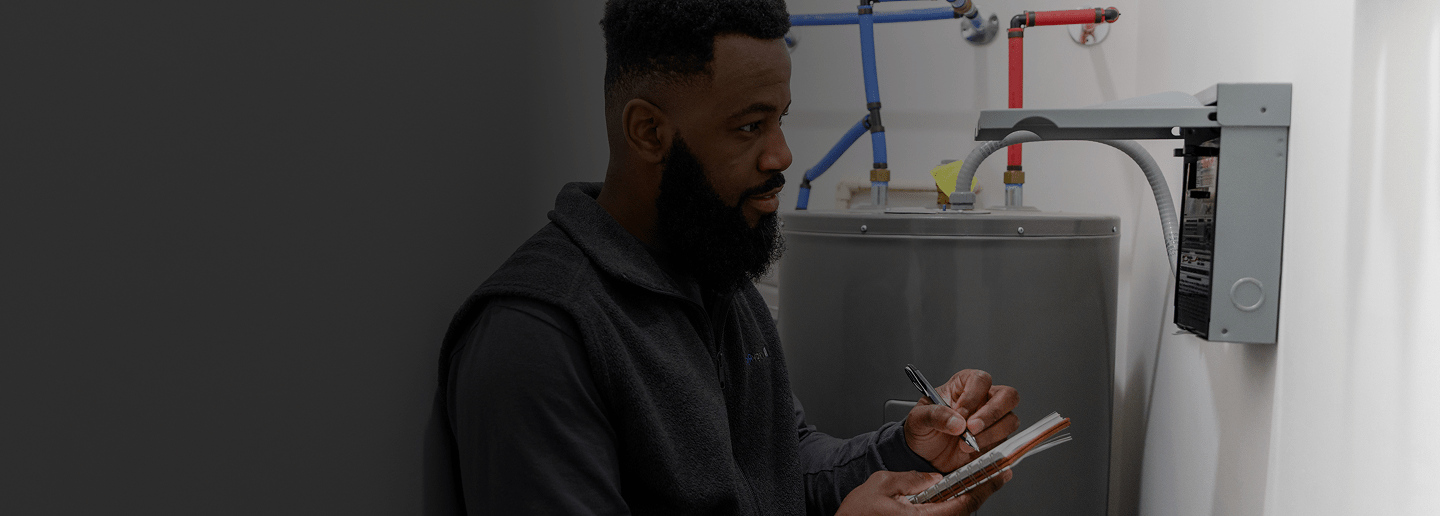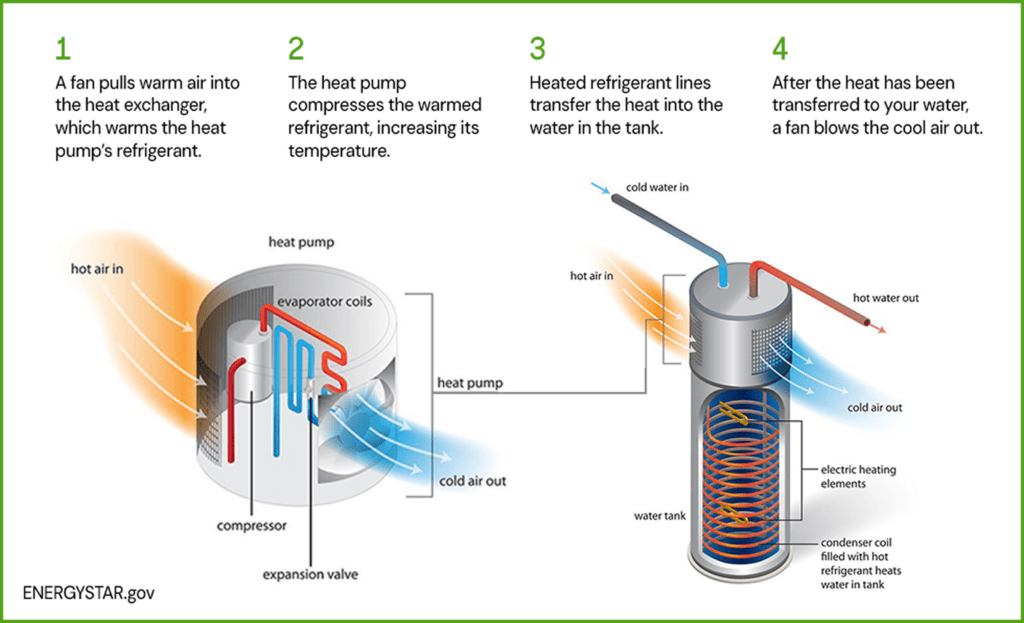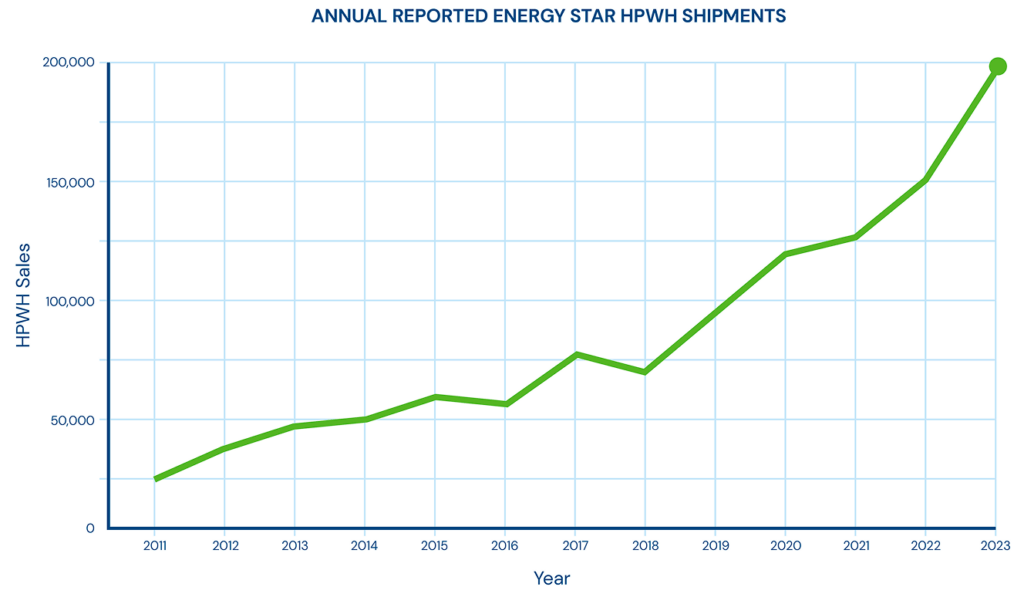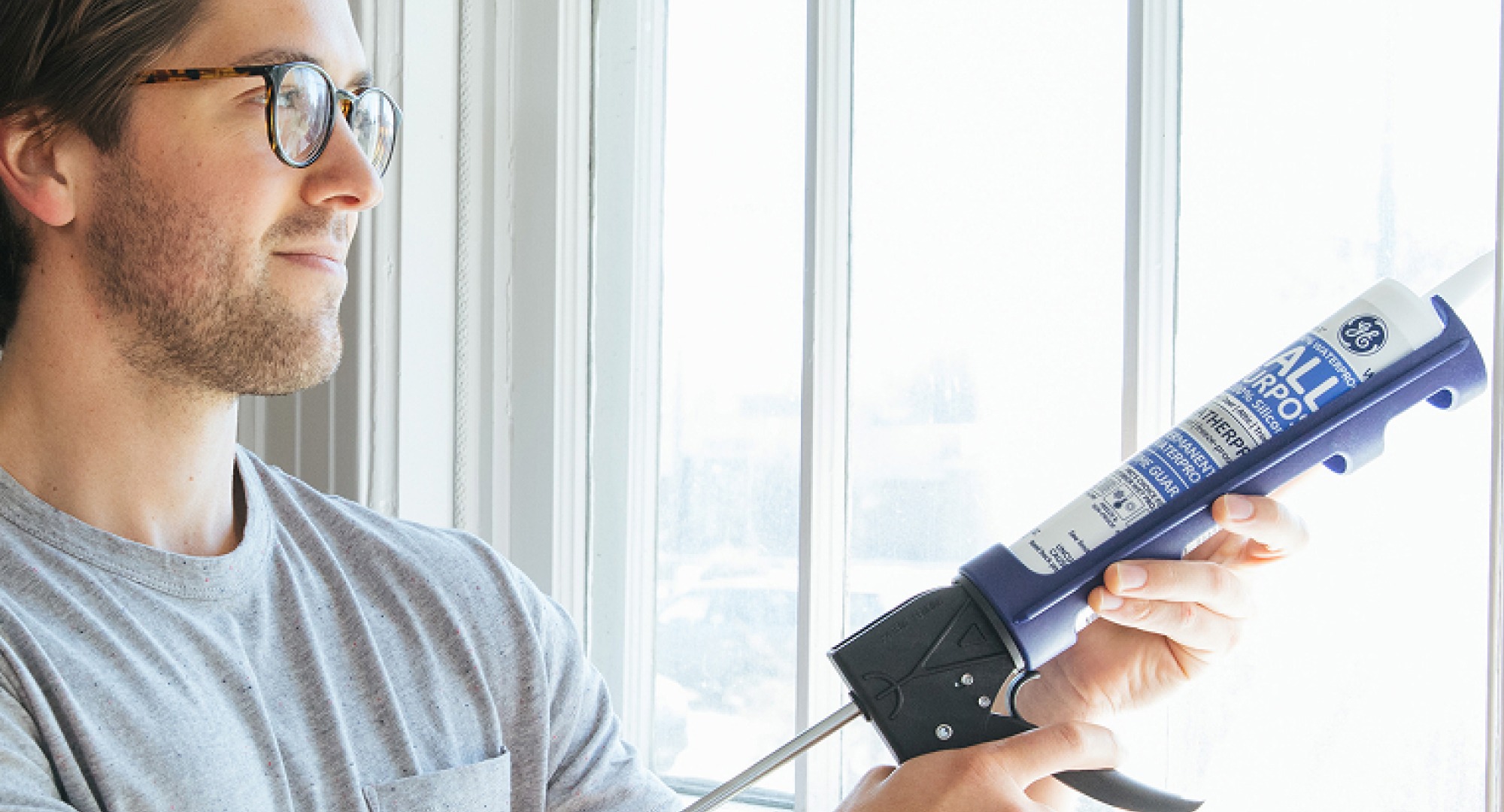Is a heat pump water heater right for your home?

Thinking about replacing your old water heater? Good news — heat pump water heaters (HPWHs) might just be one of the smartest, most reliable investments you can make for comfort, savings and peace of mind.
Here’s what we’re going to cover in this article to help you decide whether or not a heat pump water heater is right for your home:
- A (very) brief history of heat pumps.
- How’s a heat pump water heater different from an electric resistance or gas water heater?
- Key benefits of heat pump water heaters.
- Types of residential heat pump water heaters.
- Installation best practices.
- Myths about heat pump water heaters.
- Market trends.

A (very) brief history of heat pumps.
The heat pump technology has been around since the 1850s and was widely adopted in the early 20th century, when early refrigeration systems were being developed. Air-source HPWHs burst onto the scene in the 1970s — and the technology has been improving by leaps and bounds ever since. Today, more and more manufacturers are entering the market each year, helping HPWHs become the fastest-growing type of water heater (New Buildings Institute).
How’s a heat pump water heater different from an electric resistance or gas water heater?
It’s all about how they work. It’s ingenious, really. Instead of generating heat through combustion or electrical resistance — like a conventional water heater — HPWHs transfer heat, using a compressor and refrigerant.
They’re kind of like your refrigerator, except running in reverse. Instead of fighting the cold by heating water, they pull warmth from the air around them and transfer it into your water tank.

6 top benefits of heat pump water heaters.
Although the initial costs for HPWHs are higher than standard electric or gas units, rebates of up to $1,300 may be available AND they offer immediate and long-term savings. Here’s a look at the key benefits of HPWHs.
#1. Energy savings
The highly efficient technology enables ENERGY STAR® certified HPWHs to consume up to 70% less energy than standard models. Which, in our seven-state region, boils down to a household of four saving up to $300 per year on electric bills!

#2. Rebates and incentives
Homeowners in the Tennessee Valley region can get an instant rebate of up to $1,300 through our Quality Contractor Network, and in stores and online at participating retail locations.
#3. Longevity
On average, HPWHs last slightly longer than conventional water heaters, with fewer breakdowns. A conventional water heater has a life span of 8-12 years and with proper maintenance, HPWHs can last about 12-15 years.
#4. Improved air quality
HPWHs do not create toxic combustion exhaust gases, such as carbon monoxide. And, because they don’t rely on combustion they minimize the risk of fire or explosion that can be caused by a fuel-fired water heater or associated gas piping.
#5. Increased control
Many models allow access to settings — such as temperature setpoints and operational modes — via a digital control panel or app.
#6. Bigger energy savings
Switching to a HPHW will save about 2800 kWh annually per household, that is 2X the saving opportunity that LEDs provided! (Nate Jutras, ENERGY STAR)
Types of residential heat pump water heaters.
There are a few different types of HPWHs, each designed for different types of homes and needs. Here are two kinds of systems that work well in our region:
Unitized 240v hybrids
The most common type of HPWH, these hybrid systems combine the flexibility of electric resistance heat with the benefits of an integrated heat pump water heater. These are great options for households with high hot water demands.
Split systems
As the name indicates, the heat pump is separate from the water tank, allowing for more flexibility in placement and installation. A solid option for tighter spaces.
Installation best practices.
To perform efficiently and reliably, HPWHs need airflow.. Most manufacturers and ENERGY STAR recommend about 700 to 1,000 cubic feet of free air space. That translates to a room that’s roughly 8×8 ft up to 10×10 ft or even larger. Although some manufacturers make units that can be installed in spaces as small as 450 cubic feet. All units are different, so always refer to manufacturer requirements!
Why so much space? Because HPWHs draw in air to extract heat, and in tighter spaces, they can’t breathe properly — making them work harder and less efficiently. If they’re located in a cramped closet without proper ventilation, they may rely too heavily on their electric heating backup.
Since HPWHs draw warmth from the surrounding air, they should be located in an area with a minimum temperature of 37° F. If your laundry room is large enough, that could be an ideal location, as heat-emitting appliances can help them run even more efficiently.
Although today’s HPWHs are significantly quieter than their predecessors, installers should avoid placing them next to bedrooms or home offices.
Finally, don’t forget about condensate! Your unit will produce water that you’ll need to drain away, using a floor drain or a condensate pump.
A member of TVA EnergyRight’s Quality Contractor Network can help ensure your new water heater is installed for maximum efficiency.
Busting a few myths about heat pump water heaters.
Heat pump water heaters are too noisy!
Today’s heat pump technology is far more efficient — and quiet — than previous generations. An intermittent soft humming sound of the compressor is normal for an ENERGY STAR Heat Pump Water Heater — typically in the range of 45 – 50 dBA. To put that into perspective, that’s quieter than normal conversation.
They’re too expensive to service.
Unlike conventional water heaters, which usually have a 6-year warranty, HPWHs often come with at least a 10-year warranty. And if your plumber has hesitations about servicing a compressor, simply contact the manufacturer — if it’s under warranty, odds are they’ll take care of it.
They’ll make my house too cold and increase heating costs.
HPWHs produce a small amount of cool, dry air, but extensive research has found the effect is negligible, usually in the range of 2°-5° F of localized cooling around the unit.

Market trends.

Questions?
Reach out to a member of the Quality Contractor Network to learn more about HPWHs. Don’t forget to ask about our instant rebate!



